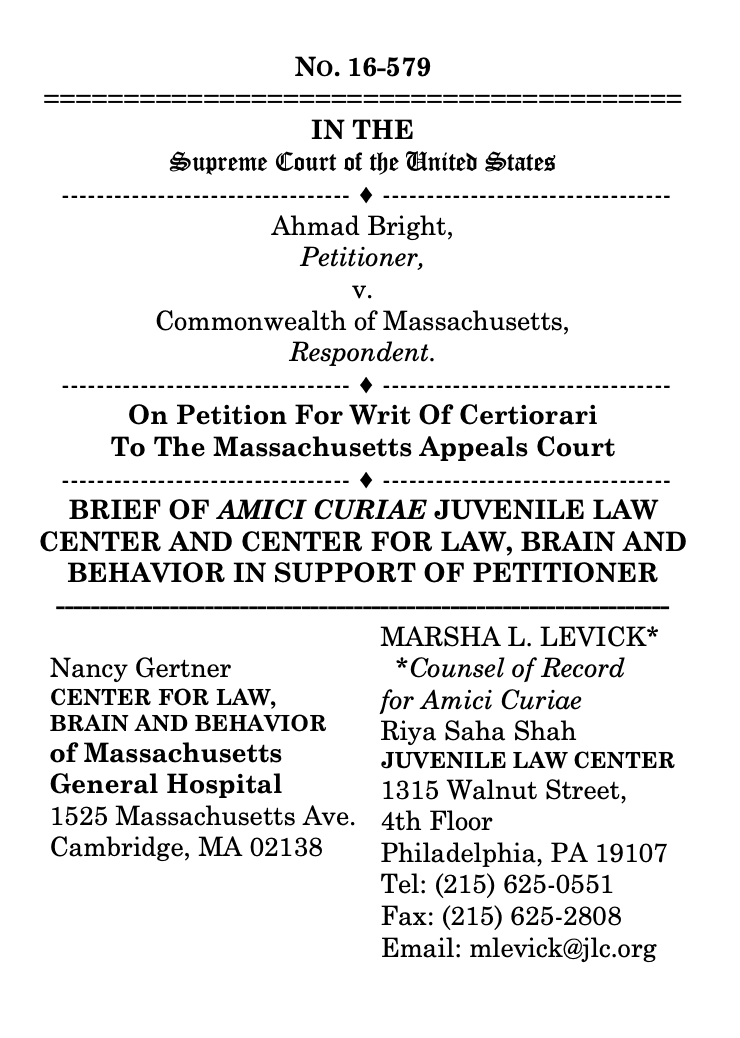
Summary of Argument
The case of Ahmad Bright raises fundamental constitutional issues unresolved by this Court in Miller v. Alabama, 132 S. Ct. 2455 (2012). At issue is the constitutional injury suffered by juveniles under the Massachusetts sentencing scheme, a scheme common throughout the country. Massachusetts law provides no occasion for the court to consider the unique neurodevelopmental issues of a 16-year-old at the time of prosecution, conviction or sentencing for second degree murder. In Massachusetts, the charge of homicide, whatever its degree, requires a mandatory transfer to an adult court. Mass. Gen. Laws ch. 119 § 74 (2013). In the adult system, a conviction for second degree murder imposes a mandatory life sentence. After fifteen years, the juvenile may petition for review by the parole board, which has unfettered discretion to grant or deny parole. Therefore, the possibility of parole, although statutorily available, is not meaningful.
The constitutional injury to Bright is made worse here not merely because of the charge and conviction. The theory of homicide underlying Bright’s conviction is not one of direct participation in the murder but a derivative liability theory—here, joint venture. Derivative liability ignores the scientific findings underscored by this Court in Miller and its predecessors, Graham v. Florida, 560 U.S. 48 (2010) and Roper v. Simmons, 543 U.S. 551 (2005), and more recent scientific evidence showing that adolescent development is strongly context dependent: risk taking behavior, deficits in adolescent decision- making, and vulnerability to peer influence are exacerbated in certain settings. Theories of derivative liability, like joint venture, that preclude any individualized examination of the circumstances of the defendant’s participation run afoul of this Court’s holding in Miller and the Eighth Amendment proportionality requirements.
Open Amicus Brief as PDF